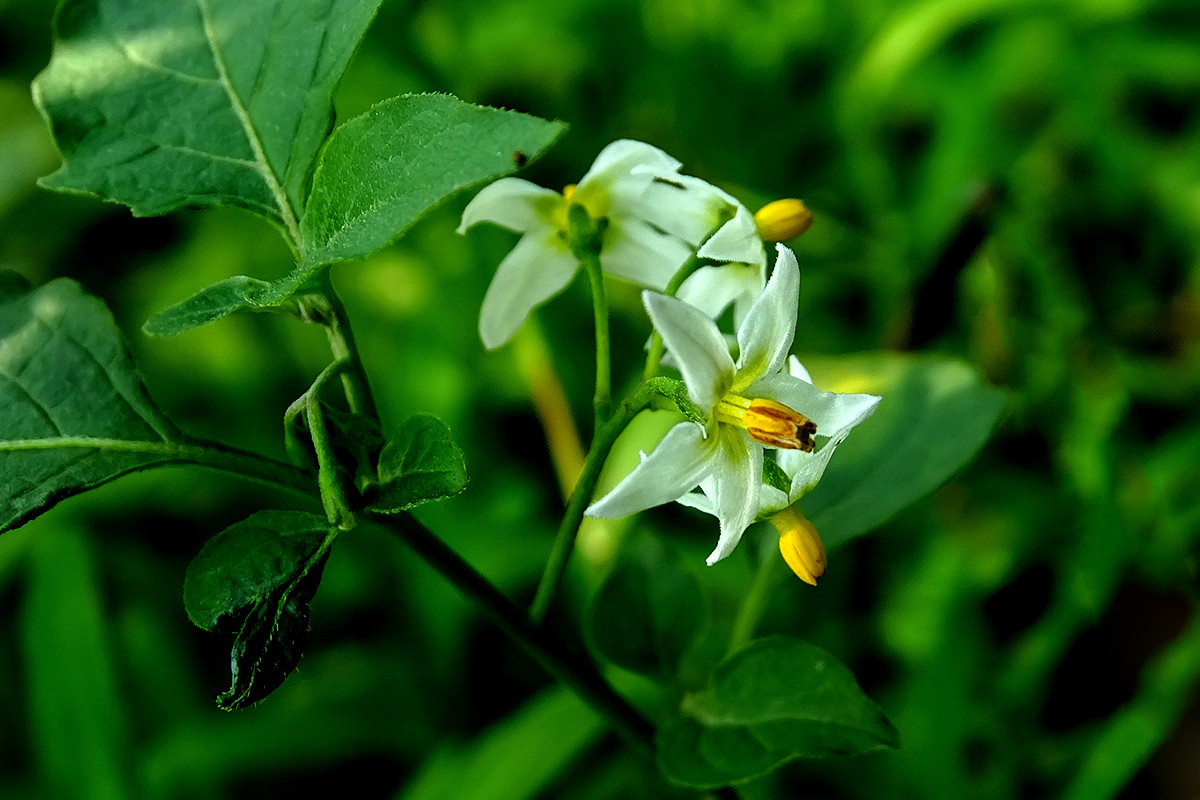Solanum Nigrum seed
Scientific name of BLACK NIGHT SHADE (B.Name : Solanum
nigrum) Family : Solanaceae:
European black nightshade (Solanum nigrum) or locally just black nightshade, duscle, garden
nightshade, garden huckleberry, hound’s berry, petty morel, wonder berry, smallfruited black
nightshade, or popolo) is a species in the Solanum genus, native to Eurasia and introduced in
the Americas, Australasia, and South Africa. Parts of this plant can be toxic to livestock and
humans, and it is considered a weed. Nonetheless, ripe berries and cooked leaves of edible
strains are used as food in some locales, and plant parts are used as a traditional medicine. A
tendency exists in literature to incorrectly refer to many of the other “black nightshade” species
as “Solanum nigrum“.
Solanum nigrum has been recorded from deposits of the Paleolithic and Mesolithic era of ancient
Britain and it is suggested by the botanist and ecologist, Edward Salisbury, that it was part of
the native flora there before Neolithic agriculture emerged. The species was mentioned by Pliny
the Elder in the first century AD and by the great herbalists, including Dioscorides. In 1753, Carl
Linnaeus described six varieties of Solanum nigrum in Species Plantarum.
Solanum nigrum Leaves, Fruits & Flowers
In India, the berries are casually grown and eaten, but not cultivated for commercial use. In
South India, the leaves and berries are routinely consumed as food after cooking with tamarind,
onion, and cumin seeds. The berries are referred to as “fragrant tomato”. Although not very
popular across much of its growing region, the fruit and dish are common in Tamil Nadu
(மணதத்க்காளி in Tamil), Kerala, southern Andhra Pradesh, and southern Karnataka.In
Ethiopia, the ripe berries are picked and eaten by children in normal times, while during famines,
all affected people would eat berries. In addition, the leaves are collected by women and
children, who cook the leaves in salty water and consumed like any other Vegetable. Farmers in
the Konso Special Woreda report that because S. nigrum matures before the maize is ready for
harvesting, it is used as a food source until their crops are ready. The Welayta people in the
nearby Wolayita Zone do not weed out S. nigrum that appears in their gardens since they
likewise cook and eat the leaves.In Ghana, the unripe green berries are called kwaansusuaa or
abedru, and are used in preparing various soups and stews, including the popular palm nut soup
commonly eaten with banku or fufu’.In South Africa, the very ripe and handselected fruit
(nastergal in Afrikaans and umsobo in Zulu) is cooked into a beautiful but quite runny purple jam.
The plant comes up very well in tropical and subtropical climate upto 2000m altitude. They can
be raised on a variety of soils good in organic matter. The plant grows in different kinds of soil
including dry, stony, shallow or deep soils. It usually grows in moist habitat in wastelands or as
weed. It can be cultivated in tropical and subtropical agroclimatic regions.
Propagation is by seeds. The seedlings are first raised in the nursery and transplanted to the
main field 30-45 days after sowing when the plants attain 8-10 cm height. During rainy season,
planting is done on ridges while during summer in furrows, at a spacing ranging from 30-90 cm
depending upon the stature and spreading habit of the plant. The transplanted seedlings should
be given temporary shade for 2-4 days during summer.
Manures and fertilizers:
FYM or compost at 20-25t/ha is applied at the time of land preparation. A moderate fertilizer
dose of 75:40:40 N, P2O5, K2O/ha may ne given. P is given as basal dose, N and K are applied
in 23 split doses.
Irrigation:
The nursery beds and plantation should be irrigated periodically as and when required weekly or
fortnightly. The plants are irrigated till it flowers.
Interculture :
One or two intercultural operations are needed to control weeds. The plants need earthing up
after weeding and topdressing. Irrigation is needed at 34 days interval during summer and on
alternate days during fruiting period. Plants need staking to avoid lodging due to heavy bearing.
Plant protection:
Shoot borers, mealy bugs, leaf Webbers and miners are noted on the crop, which can be
controlled by spraying mild insecticides. Root knot nematode, wilting and mosaic diseases are
also noted on the crop. Field sanitation, crop rotation and burning of crop residues are
recommended.
Harvesting and yield:
The crop is usually ready for harvesting after 4-6 months depending upon the climate and soil.
The plants are collected and dried in shades.
Uses:
The whole plant is useful for rheumatalgia, swellings, cough, asthma, bronchitis, wounds, ulcers,
flatulence, dyspepsia, hepatomegaly, otalgia, hiccough, opthalmopathy, vomiting, cardiopathy,
leprosy, skin diseases, fever, splenomegaly, emollient, antiseptic, antiinflammatory,
expectorant, anodyne, vulnerary, digestive, laxative, diuretic, cardiotonic, depurative,
diaphoretic, febrifuge, rejuvenating, sedative, alterant and tonic.

